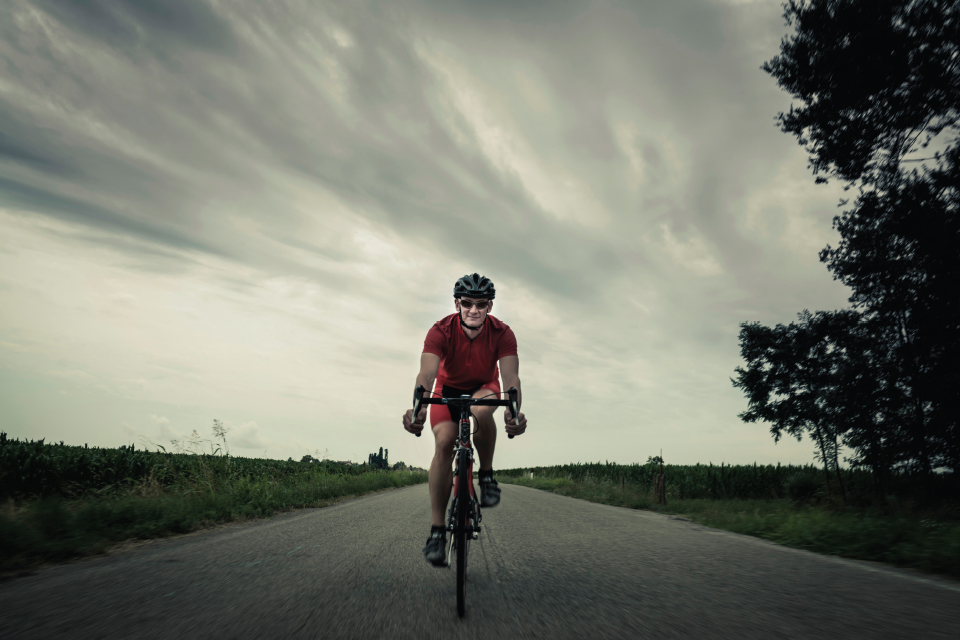Nutrition: Triathlon’s Fourth Element

The saying “what goes in, comes out” perfectly describes how a good nutrition plan can influence triathlon training and racing. Just like for general training and workouts, it makes sense to apply periodization to nutrition. Constant nutritional restriction can be limiting and stressful. Those athletes who obsess too much about nutrition in daily life and always put certain restrictions in their diet are, surprisingly, often not the ones who do well in races. Balance is key here.
Off-season. Once race season is over, it is normal to gain a few pounds. Maintaining an ideal race weight all year is hard and can be unhealthy. Take the limitations away, but don’t go crazy off-course. Any weight gain should stay under control. For most athletes, this happens naturally: though they work out less, they are also less hungry.
Base Training. While ramping up training, take weight loss slowly. During the base phase, training volume is typically high, but the intensities are still relatively low. Losing more than one pound per week probably means a lot of workouts are being under-fueled, which can easily lead to getting sick. Use mostly solid foods (energy bars, etc.) to fuel workouts to get a break from liquid nutrition and gels.
To support higher training loads, time post-swim/ride/run nutrition accordingly. Get a mix of protein and carbohydrates in the first 30 to 45 minutes after a workout to speed up recovery. Waiting too long to refuel—especially after hard or long workouts—can negatively affect recovery, which carries over into the following workouts.
Outside of training, staying balanced is key. The majority of food should be healthy, though there are plenty of opinions out there as to what this means. Still, this is a phase to eat what feels right to you.
Build and Race Season. This is the time when athletes want to optimize race weight and eat to fuel optimal performance. Sufficient calorie intake is still key; athletes who are regularly low in calories will not be able to perform and train hard. Even falling behind for one or two days can affect the next few days’ performance. In triathlon, race season is often in the summer, which means constantly staying hydrated is an imperative key to good workouts and races. This phase is the important time in training to limit unhealthy foods in daily diet and eat nutritious fuel to support training loads.
Race Day. With this information in mind, here’s how I approach a long race day (i.e. half- and full-Ironman distances).
2.5–3 hours before start: I eat a solid breakfast, usually a bowl of oatmeal with a banana, and one or two eggs for protein.
T1: I take 10–15 minutes after the swim to refuel.
On the bike: This is where I take in the most calories, targeting at least 300 calories per hour by eating in small increments; every 10–15 minutes, I sip from a bottle of highly concentrated fuel. Each bottle has about 1,000 calories, so I know how much is consumed. Electrolytes are pre-packaged.
On the run: I take water at every aid station and get a good amount of calories (at least 250 to 300 per hour).
The unexpected: When I get stomach or GI issues, I drink only plain water in small sips for the next 15–20 minutes until it settles, and then slowly take in fuel in small sips. If I feel any oncoming cramps, I immediately increase fluid intake and swallow extra electrolytes (I always carry extra electrolytes beyond what I think is needed in a race). arm
7 Tips for Training and Racing Nutrition
Timing is key. What time you eat and drink throughout the day is often more important than what you eat. Get some calories in during the 30 minutes before a workout. For workouts lasting longer than 60 minutes, take in calories during the workout so you don’t get depleted, and always refuel–preferably with some protein–within 30 to 45 minutes post-workout for optimal recovery.
Eat enough. Most triathletes do more than one workout per day. On days with high training loads, getting enough fuel is a big challenge. Falling behind affects training workouts and race performance. To stay strong and healthy, focus on getting what is needed to fuel workouts rather than counting calories.
Weight is secondary. For triathletes, losing too much weight is often counterproductive. Swimming and cycling require a lot of strength. When I lose too much weight, my cycling performance is negatively affected. Try to concentrate on feeling healthy and strong instead of staring at a number on a scale.
Supplement when necessary. I take vitamin and mineral supplements almost every day, many of which can be obtained through a balanced and nutritious diet. But during phases of heavy training, there’s an increased amount of stress on our bodies. Supplementing with extra vitamins maintains health and prevents issues, such as cramping or tissue injuries.
Avoid sugars. The one thing I try to stay away from as much as possible is simple sugars. Taking in too much often leads to cravings, spikes, and crashes in energy levels during workouts as well as frequent stomach issues and other general health problems.
Practice nutrition at high intensity. Taking fuel in at lower intensities is generally much easier. Often, I see Ironman athletes practicing their race nutrition strategies during a slow 5- to 6-hour ride. The real challenge is to take nutrition (calories and hydration) in during higher intensity efforts. Practice properly re-fueling during intensity workouts at race-pace effort in training.
Have a nutrition plan. Any race longer than 90 minutes should require some calorie intake, and almost all races require hydration. My preference is to always be independent of any fuel that is provided by the race, so I always carry my own and have a plan regarding what that is and how much of it I need to take during a race. I do, however, drink the water provided at aid stations in every race.






